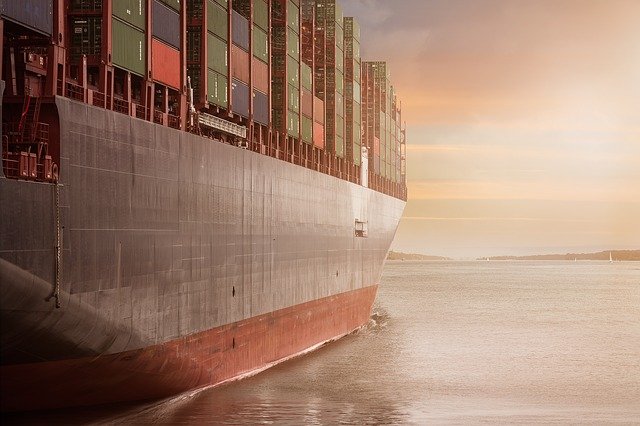
-
There is no shortage of empty containers in the Philippines although space on mother vessels is in short supply, according to the president of the Association of International Shipping Lines
-
The problem of shipping space will likely be resolved by the second quarter after the Chinese New Year rush
-
AISL expects 10% better cargo volumes in the Philippines in 2021 as long as no “hard lockdowns” are implemented. But the figure will still be short of pre-pandemic volumes.
There is no shortage of empty containers in the Philippines although space on mother vessels is in short supply, Association of International Shipping Lines (AISL) president Patrick Ronas told PortCalls in an email.
Since last year there have been global issues with equipment shortage, but more particularly in Asia, due to a confluence of factors, but primarily due to COVID-19 pandemic. A new analysis by Drewry consultancy said cargo shippers may have to endure the current very high freight rates for some time as the container logjam is seen to continue at least until the second quarter of this year.
READ: Container crisis to last until 2Q, spur higher freight rates, predicts Drewry
For the Philippines, however, Ronas explained the prevailing situation has little to do with shortage of containers since the Philippine market suffers from imbalanced trade in favor of imports. About 80% of containers being moved out of Manila are empty containers and only 20% are used for export.
“Shipping lines move the empties out otherwise they will be deemed as overstaying and lines have to pay unreasonable fees to customs. Therefore, there is no shortage of containers. What we have is a shortage on the space on the mother vessels,” Ronas said.
He explained that a shipping line will not release a container to the shipper if the shipping line is not able to secure a space for it on the mother vessel that call transshipment hubs such as Hong Kong, Shanghai, Busan, Singapore, and Kaohsiung. Otherwise, the containers will be “rolled over and storage fees can accumulate, which shippers will not be prepared to shoulder.”
These transshipment hubs are currently rolling over containers as there is not enough vessel space to load them or clear them from the port, Ronas noted.
He explained further that the lack of vessels in transshipment hubs has been affected by congestion in ports where vessels originate, like the US West Coast and some ports in Europe.
Currently, there are ships in the US waiting from four days to a week just to dock, affecting schedule reliability and leading to further delays.
The issue on shipping space will most likely be resolved by the second quarter after the Chinese New Year rush, Ronas said.
On the reported increase of freight rates due to the global container shortage, Ronas said it’s best shippers check with individual carriers “as no carriers’ situation is the same.”
He said: “There are carriers who are global and there are some that are focused on regional movements. A global carrier who deals in the Philippines may shift their focus on other markets or trades and therefore the price point may differ.”
As for blank or cancelled sailings, Ronas explained some carriers are expected to execute blank sailings only to recover lost schedules or try and regain schedule reliability brought about by congestion in some ports. He noted there are reports all available container vessels are already on the water.
Better 2021 prospects
For this year, Ronas said AISL expects cargo volumes in the Philippines will be better compared to last year as long as no “hard lockdowns” are implemented again as what happened last year.
“We should run 10 percent better (over) last year but may (still) fall short of 2019 volumes by several percentages,” he said.
Preliminary data from the Philippine Ports Authority showed cargo volume handled by Philippine ports in 2020 dropped 13.7% to 229.807 million metric tons from 266.417 million mt in 2019 as both domestic and foreign cargoes recorded declines.
READ: COVID sinks PH cargo volume by 13.7% in 2020
While there are some industries that have grown despite the pandemic, Ronas said carriers “would like to see exports grow to a positive level.”
“Our exports year-on-year have been challenged and we hope the government addresses their concerns. Some of the hurdles are structural and are deeply rooted,” he added.
The Department of Trade and Industry has adjusted the Philippine export target to US$105 billion by 2022 from the original target of $130 billion due to the coronavirus impact and weaker global demand.
READ: DTI cuts PH export targets after COVID impact assessment
Philippine exports are expected to decline 13.6% in 2020, but grow by 12.5% in 2021 and 14.8% in 2022.
Ronas sees digitalization as a definite opportunity for shipping lines. “The pandemic forced all of us to go on-line and retail survived on the web. For some this was a reborn. The industry will also be expected to follow suit as this will be the new benchmark of efficiency. We do also hope that the government agencies in our peripherals continue to improve on their platforms,” he said.
Vaccine delivery
Asked if the delivery of COVID-19 vaccines globally will have any effect on the container shipping sector, Ronas said cargo planes are “the way to go” at this stage since shipment of vaccines would have to be fast and some would require special temperature environments.
But he noted some vaccines may be shipped through conventional reefer containers and “we should see the participation of carriers with a global reach carrying them.”
Ronas said news of vaccines arriving in the country several months from now “will surely instill the confidence in the war against this pandemic.”
He said, however, that “we still have to be careful as we expect upswings in the economy later this year.” – Roumina Pablo




